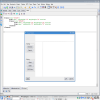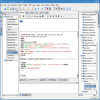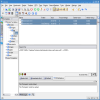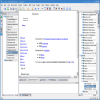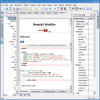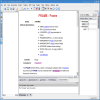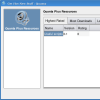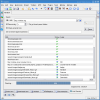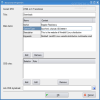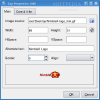Linux is a great platform for developers because of the stability of the OS and free development environments like KDevelop and Gambas. In the area of web development is not that popular, because software similar to FrontPage and Dreamwaver is not yet available. If you want to build websites in Linux, the only way is to write code by hand. Some web developers prefer this approach because it gives them a lot more flexibility but inexperienced users just want to make something quick and with no pain at all. But remember an old saying: "No pain, no gain!"
Believe it or not, Emacs is a very powerful editor, which, on the other hand, is for console and can be used for web development. I know "console web development environment" sounds kind of wired, but that's just one of the things you can do with Emacs. Anyway, Emacs is complicated and it's not user friendly. We need something for the GUI, user friendly, powerful and why not free. For this we have Quanta Plus. This is a WYSIWYG editor appropriate for people that are not complete newbies.
When I first started the interface, I saw that the buttons of the main toolbar are very much like the ones of classical text editors from KDE. Below the main toolbar are some tabs. In this tabs are buttons which you can use to format text. I was surprised how easy is to generate a simple HTML page using buttons to generate HTML tags. While you are creating your simple page you can use Quanta's dual editor. In the upper part of the screen is a VPL editor and in the lower part is the source editor. In the VPL editor you theoretically can format text without writing any code, but when things get a little more complicated this editor is just not enough. If you intend to use a little more advanced code you can say goodbye to the PVL editor because it will not be able to display any more text. Anyway I still appreciate it and I hope that as time passes it will get better. The source editor is what you will use most of the time, but, before digging a little deeper into it, let's discuss more about Quanta in general.
What's cool about Quanta?
Quanta supports several DTD (Document Type Definitions). Some of them are HTML, XHTML, XML, WML, CSS and also Docbook XML. While you might say that this is cool, you must also consider that support for Javascript and PHP DTD is missing. At least syntax highlighting is available for these two. Actually syntax highlighting is available for many programming languages and even for other stuff like database and config files.
Because Quanta is based on KDE, it means that the application is network transparent. You can use KDE KIO slaves from file dialogs and in project settings. You can also use Kommander to visually build dialogs that integrate with Quanta. These applications communicate using the Desktop Communication Protocol (DCOP). Here it pays off the good design of architectural foundations.
Quanta can really speed up your work a lot because it has anticipatory behavior. For example, when you start typing tags, a drop down list appears and you can choose the one you need. The tags are automatically closed by Quanta. Very nice feature because this way it saves some keystrokes.
There are also some wizards available and they can be of real help. When it comes to creating a table, for example, the wizard can generate all the code necessary that otherwise will take some time. The last table I created took only 5 minutes and the code was generated in about 50 lines. Quanta supports code folding. After creating the table, the program gave me the option to fold all the code related to the table and in this way my workspace becomes uncluttered. Code folding is available with many languages.
If you usually use tags for which Quanta hasn't implemented buttons or if you want to make a tab with the ones you use most often, Quanta Plus gives you the ability to make your own tab menu. Besides tags you can also use buttons like Preview in Opera and even make one of your own that starts the XMMS. This feature is fantastic because it gives you the ability to greatly optimize your workspace.
Right clicking a tag or a function shows several options. The most interesting is the Context Help. It opens a tab where is displayed a fair amount of documentation. This is very useful because it's impossible to remember all the attributes or how to manipulate everything.
In Quanta Plus you also have the ability to save web pages as templates. Just design the skeleton, save it as a template and carry on with your work. When you have to do something similar take the template and reuse it. This often happens in the real world and web designers will definitely appreciate this.
The Good
I mostly like Quanta because of the anticipatory behavior, custom tabs and because of contextual help. Things like wizards, code folding and the ability to save as templates are also great and improve the quality of the work greatly.
The Bad
VPL editor is not powerful enough to make Quanta accessible to complete newbies and if you insert some small scripts that Quanta doesn't support, the VPL editor will not display anything.
The Truth
Quanta is an excellent WYSIWYG editor. It might be the only one you can use for production purposes in Linux. The fact that Quanta is free and that Linux is also free might be a good place to start earning some money without investing any but also to get you started with webdesign. If you like to contribute with documentation to KDE, Project Quanta is a real help when making those XMLs.
 14 DAY TRIAL //
14 DAY TRIAL // 